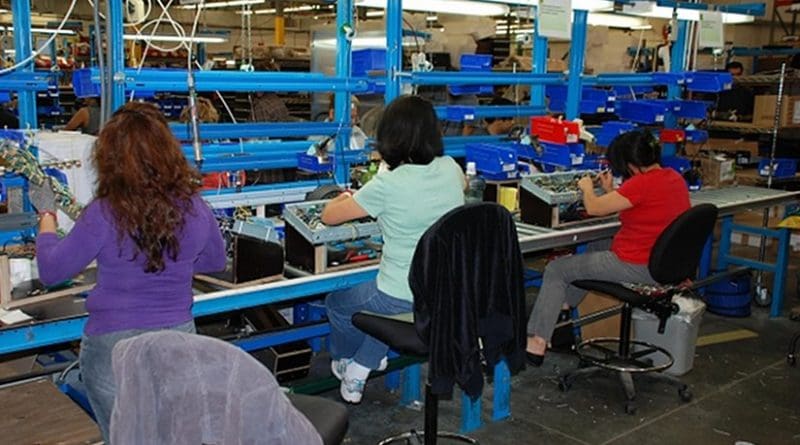Wait For Gender Equality Gets Longer As Women’s Share Of Workforce, Politics Drops
Stagnation in the proportion of women in the workplace and women’s declining representation in politics, coupled with greater inequality in access to health and education, offset improvements in wage equality and the number of women in professional positions, leaving the global gender gap only slightly reduced in 2018. This is according to the Forum’s Global Gender Gap Report 2018.
According to the report, the world has closed 68% of its gender gap, as measured across four key pillars: economic opportunity; political empowerment; educational attainment; and health and survival. While only a marginal improvement on 2017, the move is nonetheless welcome as 2017 was the first year since the report was first published in 2006 that the gap between men and women widened.
At the current rate of change, the data suggest that it will take 108 years to close the overall gender gap and 202 years to bring about parity in the workplace.
Within the global headline figures, it is possible to perceive a number of trends that are defining the gender gap in 2018. Of the four pillars measured, only one – economic opportunity – narrowed its gender gap. This is largely due to a narrower income gap between men and women, which stands at nearly 51% in 2018, and the number of women in leadership roles, which stands at 34% globally.
However, in the same economic pillar, data suggest that proportionately fewer women than men are participating in the workforce. There are a number of potential reasons for this. One is that automation is having a disproportionate impact on roles traditionally performed by women. At the same time, women are under-represented in growing areas of employment that require STEM (science, technology, engineering and mathematics) skills and knowledge. Another potential reason is that the infrastructure needed to help women enter or re-enter the workforce – such as childcare and eldercare – is under-developed and unpaid work remains primarily the responsibility of women. The corollary is that the substantial investments made by many economies to close the education gap are failing to generate optimal returns in the form of growth.
The other three pillars – education, health and politics – saw their gender gaps widen in 2018. In terms of political empowerment, the year-on-year deterioration can be partly attributed to the lower tenure of women in head-of-state roles around the world. However, data also suggest that a regional divergence is taking place, with 22 Western economies witnessing an improvement in political empowerment for women as opposed to a widening in the rest of the world. When it comes to women in parliament, these Western economies – which collectively have closed 41% of the gap – saw progress reverse in 2018.
“The economies that will succeed in the Fourth Industrial Revolution will be those that are best able to harness all their available talent. Proactive measures that support gender parity and social inclusion and address historical imbalances are therefore essential for the health of the global economy as well as for the good of society as a whole,” said Klaus Schwab, Founder and Executive Chairman of the World Economic Forum.
From STEM to AI: a new frontier in the global gender gap
While the gender gap in STEM is well chronicled, new analysis conducted in collaboration with LinkedIn points to a glaring gender gap that is developing among AI professionals, where women represent only 22% of the AI workforce. This gap is three times larger than in other industry talent pools. The analysis also suggests that, in addition to being outnumbered three to one, women in AI are less likely to be positioned in senior roles or signal expertise in high-profile, emerging AI skills. The LinkedIn data suggest that women with AI skills are more likely to be employed as data analysts, researchers, information managers and teachers, whereas men are more likely to be employed as software engineers, heads of engineering, heads of IT and chief executives – more lucrative and senior positions.
Given the depth of the talent gender gap in AI, there is a clear need for proactive measures to prevent a deepening of the gender gap in other industries where AI skills are in increasing demand. These include traditionally male-dominated industries such as manufacturing, hardware and networking as well as software and IT services, as well as traditionally female sectors such as non-profits, healthcare and education.
“Industries must proactively hardwire gender parity in the future of work through effective training, reskilling and upskilling interventions and tangible job transition pathways, which will be key to narrowing these emerging gender gaps and reversing the trends we are seeing today. It’s in their long-term interest because diverse businesses perform better,” said Saadia Zahidi, Head of the Centre for the New Economy and Society and Member of the Managing Board, World Economic Forum.
“New forms of insights can help policymakers, employers and education institutions understand – and prepare for – the technological changes that are transforming the global economy. Shedding light on the persistent gender gaps in fast-growing fields like AI is a critical first step in creating policies and practices that can close those gaps and create new pathways to economic opportunity,” said Allen Blue, Co-Founder and Vice-President, Product Strategy, LinkedIn.

